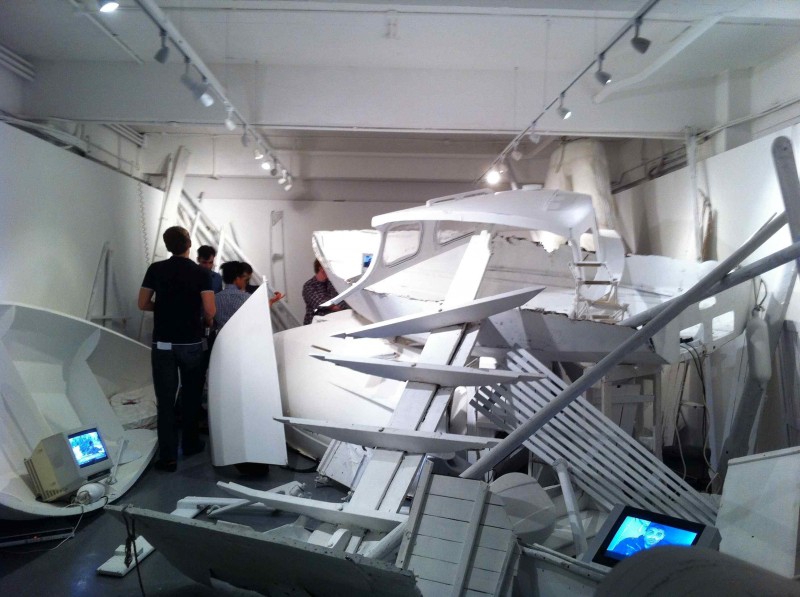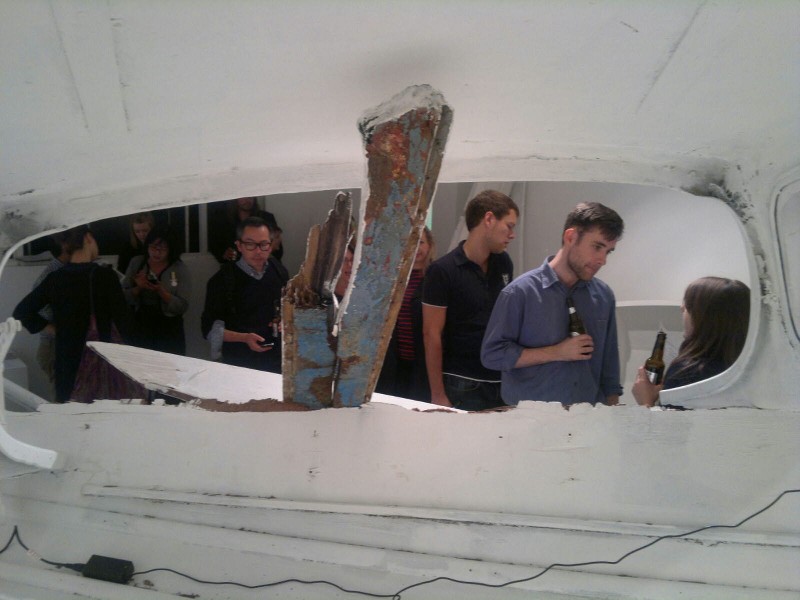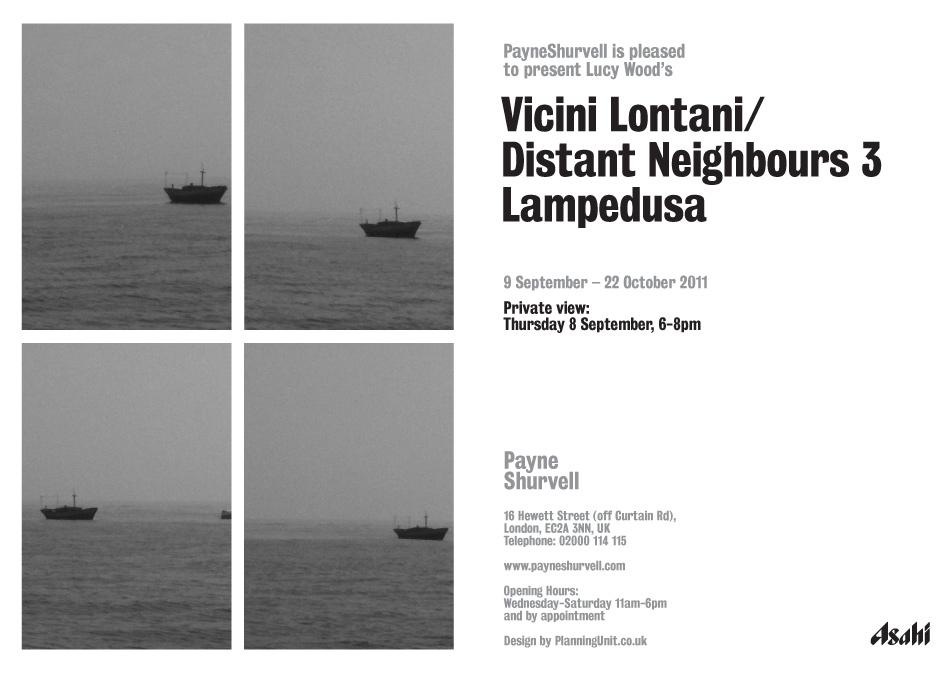LAMPEDUSA: LUCY WOOD at PayneShurvell
Lucy Wood: Vicini Lontani / Distant Neighbours 3: Lampedusa
PayneShurvell Gallery
16 Hewett Street
London, EC2A 3NN
Until 22nd October
Lampedusa is the latest in Lucy Wood’s series, Distant Neighbours: it is a show about migration, finding grand narratives in the lives of ordinary people. Lampedusa is a tiny Italian island off the African coast with only 5000 inhabitants. For many migrants, it is the gateway to Europe. 2008 saw 12,000 migrants arriving into Lampedusa’s harbour, and this number is increasing. Individual boats bring in as many as 800 refugees. The show is result of two months of research, and is comprised of eleven video interviews with both residents and immigrants. In it, Wood explores vital, global issues on an intimate scale.
This show establishes a tension between a white cube and an anti-white cube aesthetic. Part of its backdrop is a reconstructed boat graveyard, bleached in a nod to the white cube and assembled in the gallery. It dominates the space. Visitors are pushed to the margins of the gallery, dwarfed by the carcasses of the kinds of boats used by migrants to make the treacherous journey from Africa to Lampedusa. This is the most striking thing about the show and the most exciting thing about its installation. The voices of the Lampedusans and migrants echo through the boats’ skeletons, flotsam and jetsam that fill the gallery, and you are forced to pick your way through the exhibition just as you would through a genuine wreck. As a sign declares on the door to PayneShurvell, the exhibition is ‘precarious’ and ‘help up by gravity’, which gives a heightened sense of realism to it.
The work, or works, tells the story of Lampedusa: not just from the locals’ point of view, but also from the migrants’ side. James Payne, director of PayneShurvell, tells me how the whole show was made very cheaply, corresponding to the often extreme poverty in which the migrants enter Europe. The eleven interviews are presented on a range of different monitors and precariously perched within the wrecked boats, giving a sense of borrowed space and borrowed time.
Upon first entering the gallery, I was struck by its smallness, and concluded that Wood had tried to cram too much into too tight a space. However, it is this contrasting scale that gives the shards and fragments of the boats their magnitude: in a large gallery space, they would fade into insignificance, just as they so often are swallowed on the hazardous sea crossing from Africa. The size of the space enhances the spectacle, and forces the viewer to occupy the same area as the work, rather than observing it from a distance. There is a tension between the theatrical set of the installation and the documentary quality of the interviews.
However, the exhibition has formal problems. One or two of the monitors are too small, making the sur-titles difficult to read and the interviewees hard to make out. Similarly, for an unstated reason, some of the videos were muted. This was a shame, as the cacophony of voices combining within the space was one of this show’s greatest strengths. The sounds draw you through the show creating an interactive dynamic, and it was a shame to limit this.
The work explores global issues from a local platform, and this is what gives the show its real power. It tells the story of an Italian housewife who tries to look after a migrant baby; a tobacconist who gives the migrants money and cigarettes; residents who bring the migrants into their homes, feed them, clothe them and let them wash. Lampedusadocuments how extraordinary things happen to extraordinary people: Lucy Wood finds the epic in the everyday.


